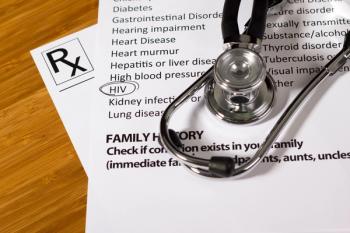
Data-mining uncovers hyperglycemic drug-drug interaction between paroxetine and pravastatin
Bioinformatics researchers at Stanford University have uncovered a never-before-reported drug-drug interaction between pravastatin and paroxetine.
Key Points
Bioinformatics researchers at Stanford University have uncovered a never-before reported drug-drug interaction between pravastatin (Pravachol, Bristol-Myers Squibb) and paroxetine (Paxil, GlaxoSmithKline). The combination appears to increase mean blood glucose levels by 19 mg/dL overall and by 48 mg/dL in patients with diabetes. Because random blood glucose levels typically fall in the low to mid-100s, the interaction could push a patient with prediabetes into outright diabetes or exacerbate existing diabetes.
"Never discount the effect drugs can have on glucose metabolism and the effect drugs can have on blood glucose," said Charles Ponte, PharmD, professor of clinical pharmacy and family medicine, West Virginia Schools of Pharmacy and Medicine, Morgantown, W.Va. "They can depress blood glucose to the point of hypoglycemia and they can certainly elevate blood glucose to create hyperglycemia."
Unique synergy
"This is an interesting technique that found a drug-drug interaction with glycemic implications, more so for diabetic patients than in normal patients," Ponte said. "We all recognize that drug trials and studies just don't have large enough numbers to tease out less common problems and interactions. Look at how long it took clinicians to become sensitized to myopathy in statin use. With the larger n you get in these huge data sets, you finally start to see some of the problems."
Researchers mined FDA's Adverse Event Reporting System (AERS) for reports of side effects involving glucose homeostasis and created an adverse event profile for diabetes-related events. They applied the profile to pairs of drugs in AERS that created side effects similar to diabetes.
The top 4 pairs were mefloquine-sertraline (Lariam, Teva; Zoloft, Pfizer), allopurinol-bendamustine (Zyloprim, GlaxoSmithKline; Treanda, Cephalon), acetaminophen-trastuzumab (Tylenol, McNeil; Herceptin, Genentech) and paroxetine-pravastatin.
Tatonetti said the team decided to investigate potential paroxetine-pravastatin interactions because of the numbers of patients that could be involved. Prescription data published in Drug Topics showed 15 million prescriptions for paroxetine and 18 million Rxs for pravastatin in the U.S. in 2009, he said. Extrapolating from prescribing data in 3 large electronic medical record data bases, the team estimated that between 550,000 and 715,000 individuals received prescriptions for the combined therapy that year.
"We're bioinformatics people, not clinicians," Tatonetti said. "We can develop ways to mine these huge data sets for interactions that have escaped attention, but you have to start with a clinical expert to curate a set of drugs and effects so you're looking for something that actually matters in the real world. I'd love to hear from pharmacists about the kinds of questions they would like answered with data-mining. Their drug knowledge is invaluable to this kind of program."
The key variable
Once the group decided to focus on paroxetine-pravastatin, they combed the electronic medical records (EMRs) of Stanford University Hospital for cases of patients taking the agents either singly or in combination.
Analyzing blood glucose levels at baseline and during treatment, researchers found that combination therapy was the key variable.
For patients with normal blood glucose, combination therapy was associated with a mean increase of 19 mg/dL. For patients with elevated blood glucose, combination therapy was associated with a mean increase of 48 mg/dL.
Data from EMRs at Vanderbilt University and Partners HealthCare showed similar results.
Preliminary tests in mice confirm a statistically significant interaction between pravastatin and paroxetine that raises mean fasting blood glucose about 50 mg/dL. A prospective trial is needed to confirm the interaction, Tatonetti said.
The interaction report was published online in May, in Clinical Pharmacology & Therapeutics.
Newsletter
Pharmacy practice is always changing. Stay ahead of the curve with the Drug Topics newsletter and get the latest drug information, industry trends, and patient care tips.















































































































